Farmer’s cheese has always felt like a little magic trick in my kitchen. The first time I made it, I couldn’t believe how easy and rewarding it was to transform just a few humble ingredients into something so creamy, delicate, and versatile. It’s one of those recipes that makes you feel deeply connected to traditional, time-honored techniques yet it comes together in under an hour.
What I love most about making farmer’s cheese is the simplicity. Every step of the process fills me with a kind of calm satisfaction, from watching the milk curdle to straining the silky curds through cheesecloth. The result is a tangy, soft cheese that tastes fresher than anything you can buy. It instantly elevates toast, salads, and even desserts.
Over the years, I’ve shared this recipe with friends and family who are always amazed that homemade cheese could taste so good. It’s the perfect entry point for anyone curious about cheesemaking, and it’s just as delicious on a casual brunch table as it is in an elegant appetizer spread.

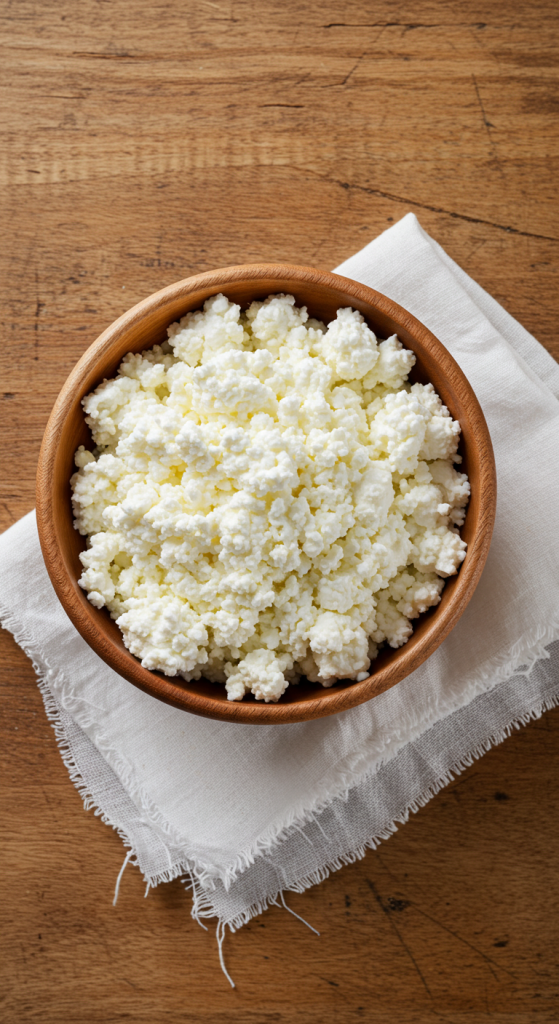

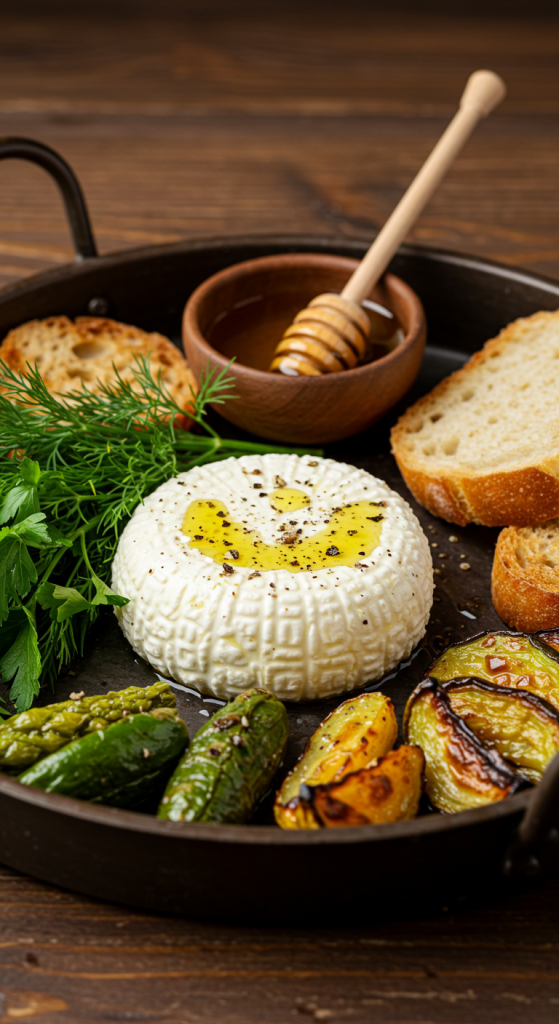
Why You’ll Love This Farmer’s Cheese
Farmer’s cheese is wonderfully versatile — mild enough to pair with fruits and honey for breakfast yet savory enough to crumble into a salad or dollop onto roasted vegetables. It’s gluten-free, naturally low in fat, and a fantastic way to impress guests with minimal effort. Homemade farmer’s cheese also allows you to control the texture, saltiness, and tang, making it truly your own. If you’ve never made cheese at home before, this recipe will show you how easy it can be to craft something exceptional with your own hands.
Ingredients
The main star of farmer’s cheese is whole milk. You need a good quality, fresh whole milk because it gives the cheese its creamy texture and rich flavor. Avoid ultra-pasteurized milk, which doesn’t curdle properly. Next is an acid — I like to use either white vinegar or freshly squeezed lemon juice to help the milk curdle. Both bring a gentle tang that complements the final flavor beautifully. Finally, a bit of salt enhances the flavor and helps bring out the cheese’s delicate nuances.
How to Make Farmer’s Cheese
Step 1: Heat the Milk
Pour your whole milk into a large, heavy-bottomed pot and heat it gently over medium heat. Stir occasionally to prevent scorching and bring it just to a simmer, about 185°F. Do not let it boil.
Step 2: Add the Acid
Turn off the heat and immediately stir in your chosen acid — vinegar or lemon juice. You’ll see the milk start to curdle within seconds, forming curds and whey. Let it sit undisturbed for about 10 minutes to fully separate.
Step 3: Strain the Curds
Line a colander with a few layers of cheesecloth and carefully pour in the curdled milk. Allow the whey to drain away while the curds remain in the cloth. Gather the edges of the cheesecloth and let it drain for 30 to 60 minutes, depending on how creamy or crumbly you prefer your cheese.
Step 4: Season and Enjoy
Once drained, transfer the cheese to a bowl and mix in a pinch of salt to taste. Your farmer’s cheese is now ready to enjoy — warm and soft or chilled for a firmer texture.
Recipe Variations and Possible Substitutions
One of the joys of farmer’s cheese is how adaptable it is. You can experiment with using goat’s milk for a tangier, earthier flavor, or even try it with a blend of whole and 2% milk for a lighter texture. For a creamier cheese, stir in a splash of heavy cream before draining. You can also mix in fresh herbs like dill, chives, or parsley at the end for a savory twist, or drizzle honey and sprinkle cinnamon for a sweet variation.
Serving and Pairing Suggestions
Farmer’s cheese is delicious spread over crusty bread with a drizzle of olive oil and cracked pepper. I often crumble it into fresh green salads or dollop it onto warm roasted vegetables. For breakfast, it pairs beautifully with fresh berries, honey, and a sprinkle of nuts. It’s also lovely as a filling for blintzes, crepes, or pierogi.
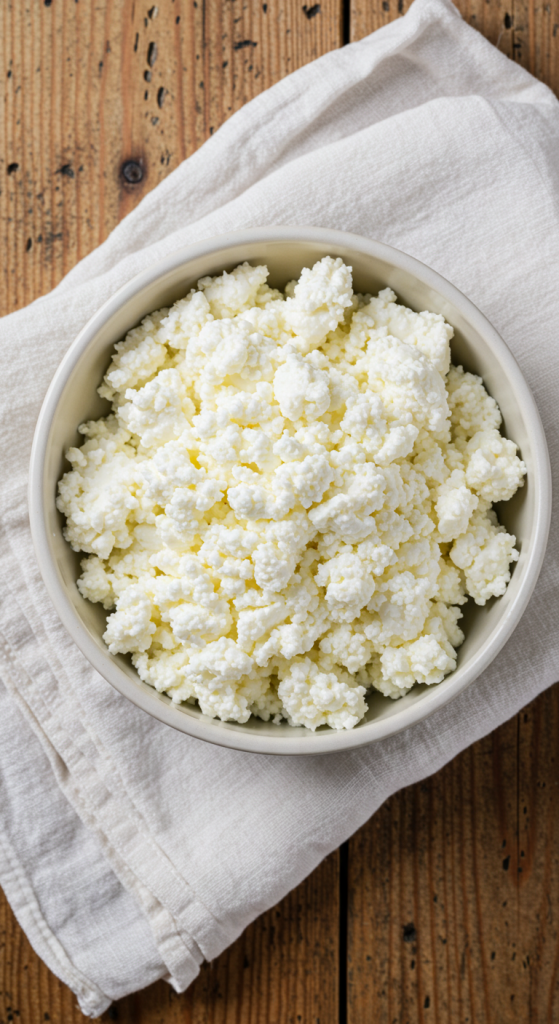
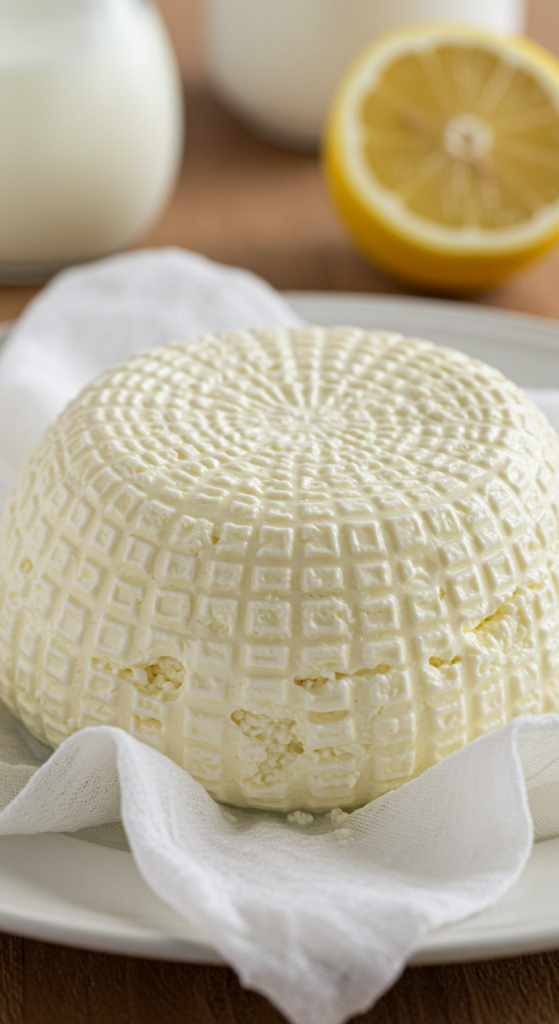

Storage and Reheating Tips
Store your farmer’s cheese in an airtight container in the refrigerator for up to 5 days. If it seems dry after a few days, simply stir in a little cream or milk to revive its creamy texture. This cheese is not suitable for freezing, as it tends to lose its delicate texture when thawed. Serve it chilled or let it come to room temperature for the best flavor.
FAQs
How long does homemade farmer’s cheese last?
Homemade farmer’s cheese stays fresh for about 5 days in the refrigerator when kept in an airtight container.
Can I use low-fat milk to make farmer’s cheese?
You can use low-fat milk, but the cheese will be less creamy and more crumbly compared to using whole milk.
Is it necessary to use cheesecloth for making farmer’s cheese?
Yes, cheesecloth is ideal for straining the curds and getting the right texture. A clean, fine-weave kitchen towel can work in a pinch.
Can I make farmer’s cheese without vinegar or lemon juice?
You need some type of acid to curdle the milk. If you don’t have vinegar or lemon juice, you could try citric acid dissolved in water.
What can I do with the leftover whey from making farmer’s cheese?
The leftover whey is rich in protein and nutrients. You can use it in smoothies, soups, or even to bake bread for added flavor.
Related Recipes You’ll Like
If you enjoy making homemade farmer’s cheese, you might also love trying my Cottage Cheese Egg Bites for a protein-packed breakfast, or explore the creamy possibilities with this Creamy Cottage Cheese Pasta Sauce. Both recipes showcase just how versatile cheese can be in your everyday cooking.
Save and Share This Recipe for Later
Don’t forget to save this farmer’s cheese recipe for your next brunch or gathering. Pin it to your favorite recipe board on Pinterest so you can find it quickly anytime. Share it with friends and family who love fresh, homemade flavors — and let them be amazed at how simple cheesemaking can be. Every share helps spread the joy of cooking something truly special at home.
Farmer’s Cheese
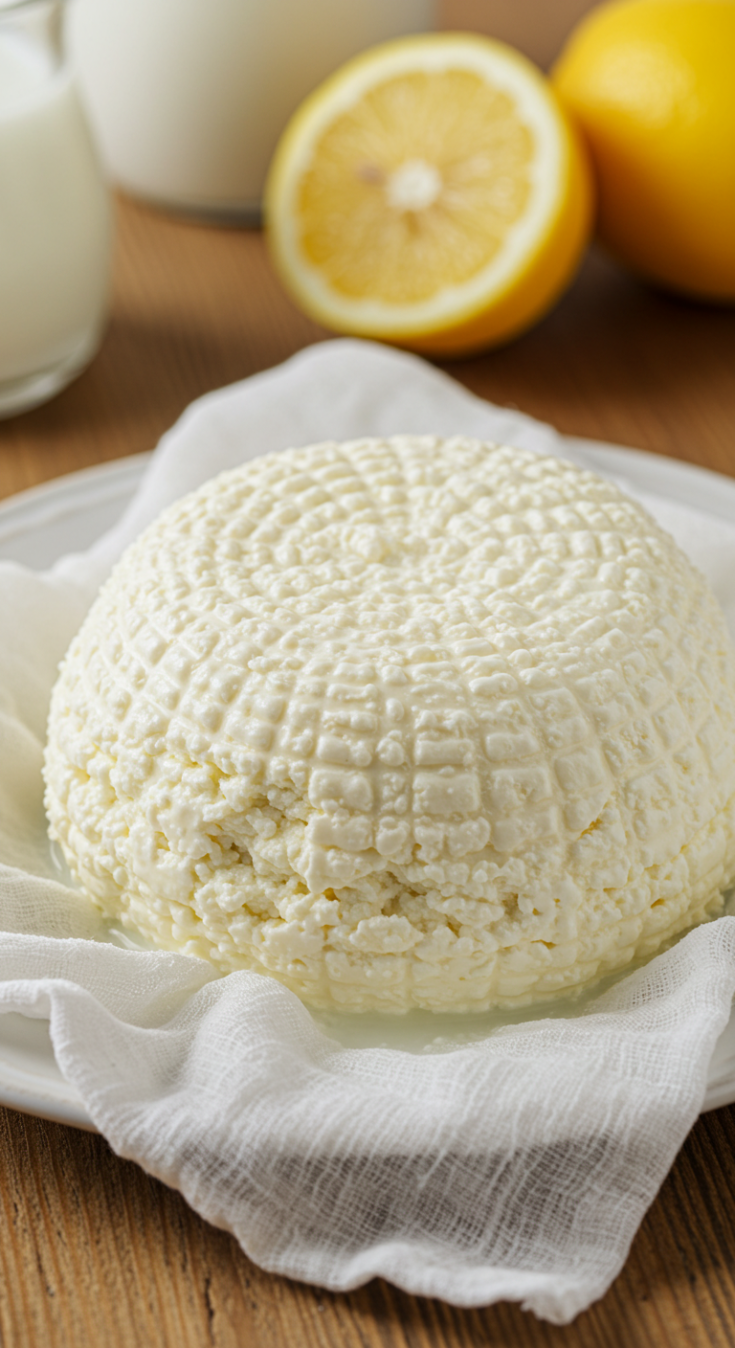
Farmer’s cheese is a soft, fresh cheese that’s incredibly easy to make at home with just three ingredients: whole milk, an acid like lemon juice or vinegar, and a pinch of salt. This homemade cheese is creamy, slightly tangy, and can be used in both sweet and savory dishes. Perfect for spreading on toast, crumbling into salads, or pairing with fruit, it’s a versatile, protein-packed addition to your kitchen repertoire. Making farmer’s cheese yourself ensures a fresher taste and allows you to control its texture and saltiness to your liking.
Ingredients
- 1/2 gallon whole milk (not ultra-pasteurized)
- 3–4 tablespoons white vinegar or fresh lemon juice
- 1/2 teaspoon salt (or to taste)
Instructions
- Heat the milk in a heavy-bottomed pot over medium heat until it reaches 185°F, stirring occasionally.
- Turn off the heat and stir in vinegar or lemon juice. Let sit for 10 minutes as curds form.
- Line a colander with cheesecloth and pour in the curdled milk. Drain for 30–60 minutes.
- Transfer cheese to a bowl, stir in salt, and serve warm or chilled.
Notes
For creamier cheese, reduce the draining time or stir in a splash of cream before draining. Add herbs or spices to customize the flavor. Store refrigerated in an airtight container for up to 5 days.
Nutrition Information:
Yield:
2Serving Size:
1Amount Per Serving: Calories: 666Total Fat: 32gSaturated Fat: 18gTrans Fat: 0gUnsaturated Fat: 10gCholesterol: 97mgSodium: 953mgCarbohydrates: 55gFiber: 0gSugar: 52gProtein: 31g



